Study on the Service Performance of a Two-Stage Floating-Ring Isolation Seal for a High-Speed Turbopump with a Cryogenic Medium
Abstract
:1. Introduction
2. Sealing Structure and Principle
2.1. Sealing Structure
2.2. Sealing Principle
2.3. Sealing Performance
2.3.1. Leakage Characteristics
2.3.2. Floating Ring Operating Stability
3. Finite Element Simulation
3.1. Model and Mesh
3.2. Numerical Simulation Pre-Processing
- The isolated gas is the ideal gas;
- The floating ring is in a fully-floating state;
- The floating-ring auxiliary-sealing surface is completely tightened to the chamber.
4. Seal Service Performance Test
4.1. Test Bench Construction and Preparation
4.2. Test Procedure
- Completion of the assembly of the coupling, bearing cavity, and sealing cavity in the order of test-bench assembly;
- Connection of leak-measurement devices, pressure gauges, bearing temperature measurement, and lubrication systems, and connection of isolated gas lines to the inlet;
- Change the inlet pressure of the isolated gas sequentially in the motor-stop state, 0–0.5 MPa, and change the inlet pressure sequentially at intervals of 0.05 MPa; wait for the electronic gas-volume flowmeter to indicate a stable number and record the leakage amount;
- A small amount of liquid nitrogen is added to the outer chamber of the secondary floating ring, and the next step is performed after the liquid nitrogen in the chamber has vaporized and there is no visible liquid nitrogen;
- Start the fan and motor, increase the motor speed, and measure the side inlet-pressure leakage at five speeds of 6000 rpm, 10,000 rpm, 12,000 rpm, 14,000 rpm, and 20,000 rpm;
- Change the tangential air-inlet direction, repeat test steps (3) and (4), observe the test phenomenon, and record the leakage-volume data;
- Operate continuously for 600 h at 20,000 rpm and 0.5 MPa inlet pressure to observe the test phenomenon and floating ring integrity.
5. Results
5.1. Flow Field Flow Characteristics
5.2. Leakage Characteristics of the Floating Ring Isolation Seal
5.2.1. The Air Inlet Direction Is in the Same Direction as the Spindle Rotation Direction
5.2.2. The Air-Inlet Direction Is in the Opposite Direction to the Spindle-Rotation Direction
5.3. Floating Ring Isolation Seal Service Performance
6. Conclusions
- The two-stage floating ring isolation seal shows superior operational stability when the air is fed in the same direction as the spindle rotation, and the main seal surface has no slotted floating ring structure. The leakage is about 0.55–0.6 g/s under the working conditions of 0.5 MPa and 20,000 rpm.
- The leakage of the two-stage floating-ring isolation seal is mainly related to the isolation gas inlet pressure, showing a positive proportional relationship. After the speed exceeds 12,000 rpm, the leakage volume is not greatly affected by the spindle speed.
- After 600 h of the service performance test, the sealing system, with the inlet direction the same as the spindle rotation and no slotting on the main sealing surface, operated stably. In addition, the auxiliary sealing surface did not have violent friction. The seal system could not work stably and was accompanied by smoke when the directions were opposite to one another. Through observation of the auxiliary sealing surface of the seal, there were obvious scratches and friction marks, the end face was obviously gray, and the copper-metal color faded.
- A full-size three-dimensional flow-field finite-element model was developed. When the floating ring is floating, the “inlet effect” has less influence on the leakage performance of the floating ring. The low-temperature zone is mainly concentrated in the dorsal cavity of the secondary float ring, which has less influence on the primary float ring. When the inlet direction is different to the spindle-rotation direction, the gas will flow irregularly in the intermediate cavity, so the auxiliary sealing surface of the floating ring cannot be tightened stably, which affects the stability of the sealing system.
Author Contributions
Funding
Institutional Review Board Statement
Informed Consent Statement
Data Availability Statement
Conflicts of Interest
References
- Ma, Y. Research on Opening Performance and Leakage Performance of Integral Gas Film Floating Ring Seal. Master’s Thesis, Beijing University of Chemical Technology, Beijing, China, 2020. [Google Scholar]
- Xia, P.; Chen, H.; Liu, Z.S.; Ma, W.S.; Yang, B.F. Analysis of whirling motion for the dynamic system of floating ring seal and rotor. Proc. Chin. Soc. Electr. Eng. 2019, 233, 1221–1235. [Google Scholar] [CrossRef]
- Zheng, R.; Chen, X.Z.; Li, S.X.; Zhao, X.; Shi, R.J.; Song, Z.F. Study on opening characteristics of high speed gas film inlaid floating ring seal. J. Beijing. Univ. Aeronaut. Astronaut. 2022, 48, 2111–2120. [Google Scholar]
- Ha, T.; Lee, Y.; Kim, C. Leakage and rotordynamic analysis of a high pressure floating ring seal in the turbo pump unit of a liquid rocket engine. Tribol. Int. 2002, 35, 153–161. [Google Scholar] [CrossRef]
- Ma, Y.; Wang, Q.F.; Shi, R.J.; Zhang, X.Y.; Li, Q.Z.; Li, S.X. Research on floating performance of aeroengine air film floating ring seal. Lubr. Oil 2021, 46, 38–44. [Google Scholar]
- Ma, Y.R.; Huo, W.H.; Liu, J.; Jiang, L.J.; Fang, Z.; Li, Z.G. Investigations on the leakage performance of wear failure and anti-rubbing structure design for a labyrinth seal. Chin. J. Turbomach. 2019, 61, 64–71. [Google Scholar]
- Arghir, M.; Tonon, D.; Dehouve, J. Analytic modeling of floating ring annular seals. J. Eng. Gas Turbine Power 2011, 134, 577–586. [Google Scholar] [CrossRef]
- Ma, R.M.; Zhao, X.; Li, S.X.; Chen, X.Z.; Yang, H.C. Experimental study on leakage characteristics of high speed gas split floating ring seal. Chin. J. Turbomach. 2020, 62, 75–81. [Google Scholar]
- Bae, J.-H.; Kwak, H.-D.; Heo, S.-J.; Choi, C.-H.; Choi, J.-S. Numerical and experimental study of nose for Lox floating ring seal in turbopump. Aerospace 2022, 9, 667. [Google Scholar] [CrossRef]
- Antoine, M.; Mihai, A.; Pierre, H.; Jerome, D. Experimental analysis of floating ring annular seals and comparisons with theoretical predictions. J. Eng. Gas Turb. Power 2015, 138, 042503. [Google Scholar]
- Shi, R.J. Temperature Field Analysis and Dynamic Performance Research of Inlaid Gas Film Floating Ring Seal. Master’s Thesis, Beijing University of Chemical Technology, Beijing, China, 2021. [Google Scholar]
- Shi, R.J.; Li, S.X.; Zheng, R.; Ma, L.J.; Zhang, J.B. Design method and research of high temperature gas floating ring seal with slightly variable gap. IOP Conf. Ser. Mater. Sci. Eng. 2021, 1081, 012005. [Google Scholar] [CrossRef]
- Li, G.Q.; Zhang, Q.; Huang, E.L.; Lei, Z.J.; Wu, H.W.; Xu, G. Leakage performance of floating ring seal in cold/hot state for aero-engine. Chin. J. Aeronaut. 2019, 32, 2085–2094. [Google Scholar] [CrossRef]
- Oike, M.; Nosaka, M.; Kikuchi, M.; Hasegawa, S. Two-phase flow in floating-ring seals for cryogenic turbopumps. Tribol. Trans. 1999, 42, 273–281. [Google Scholar] [CrossRef]
- He, C.H.; Xue, Z.H.; Liu, X.F.; Wang, T.Z. The rotor dynamic analysis of centrifugal pump rotor system. Chin. J. Turbomach. 2019, 61, 65–70. [Google Scholar]
- Xie, Y.N.; Hu, X.W.; Sun, Y.; Zhang, H. Effect of labyrinth seal on the stability of cantilever disk-hollow rotor and the improvement method. Chin. J. Turbomach. 2022, 64, 68–74. [Google Scholar]
- Choi, C.H.; Noh, J.G.; Kim, D.J.; Hong, S.S.; Kim, J. Effects of floating-ring seal clearance on the pump performance for turbopumps. J. Propul. Power 2009, 25, 191–195. [Google Scholar] [CrossRef]
- Balakh, L.Y.; Nikiforov, A.N. The reduction of the vibration level in high-speed rotor systems by means of floating seal rings. J. Mach. Manuf. Reliab. 2013, 42, 276–280. [Google Scholar] [CrossRef]
- Balakh, L.Y.; Barmina, O.V. The stability of rotation for a rotor with floating seal rings. J. Mach. Manuf. Reliab. 2015, 44, 114–119. [Google Scholar]
- Wang, J.X.; Li, S.X.; Ma, W.J.; Feng, R.P.; Liu, Z.W. Frictional heat analysis of bearing cavity ring-shaped floating ring seal. J. Mech. Electr. Eng. 2020, 37, 1032–1038. [Google Scholar]

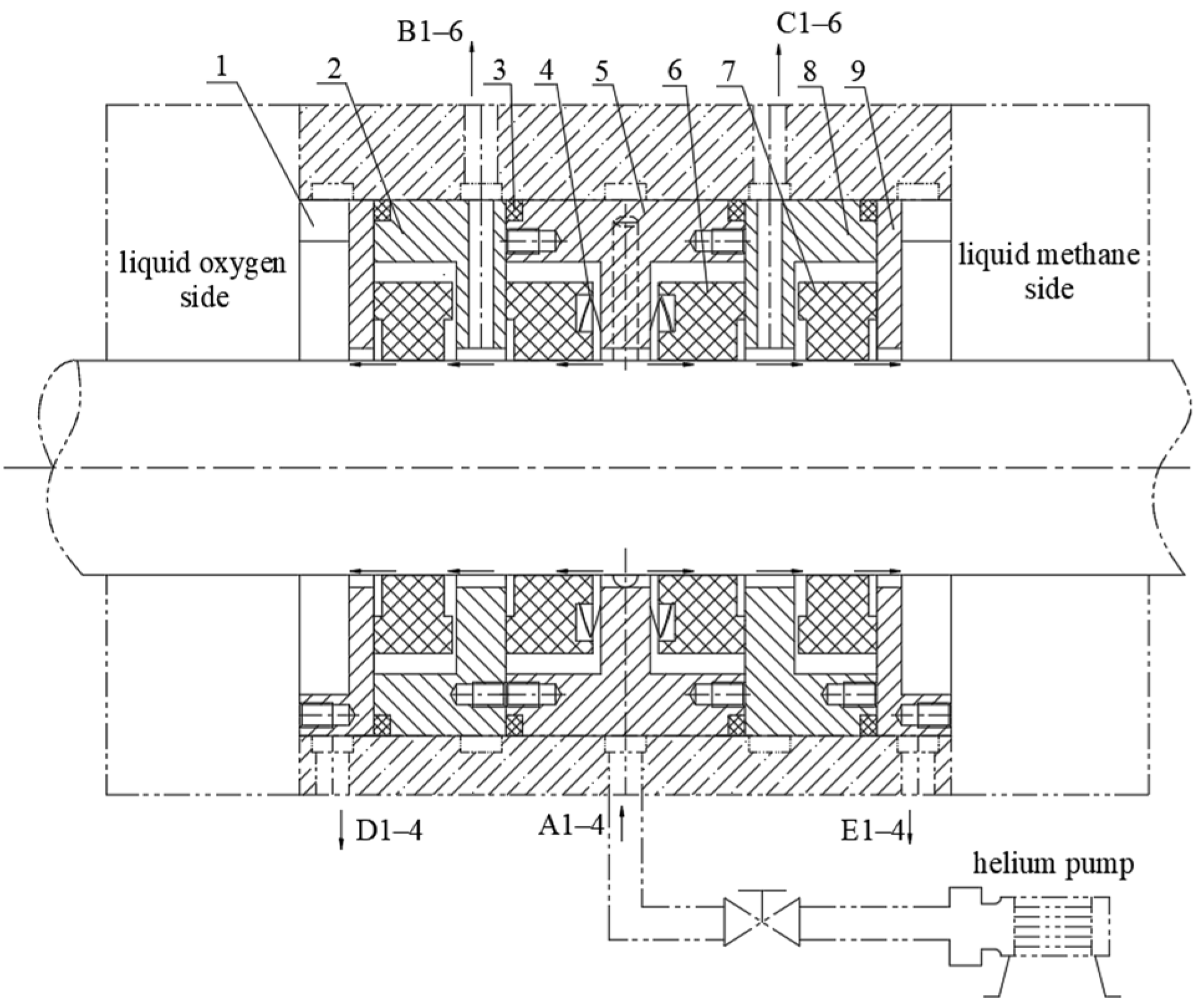
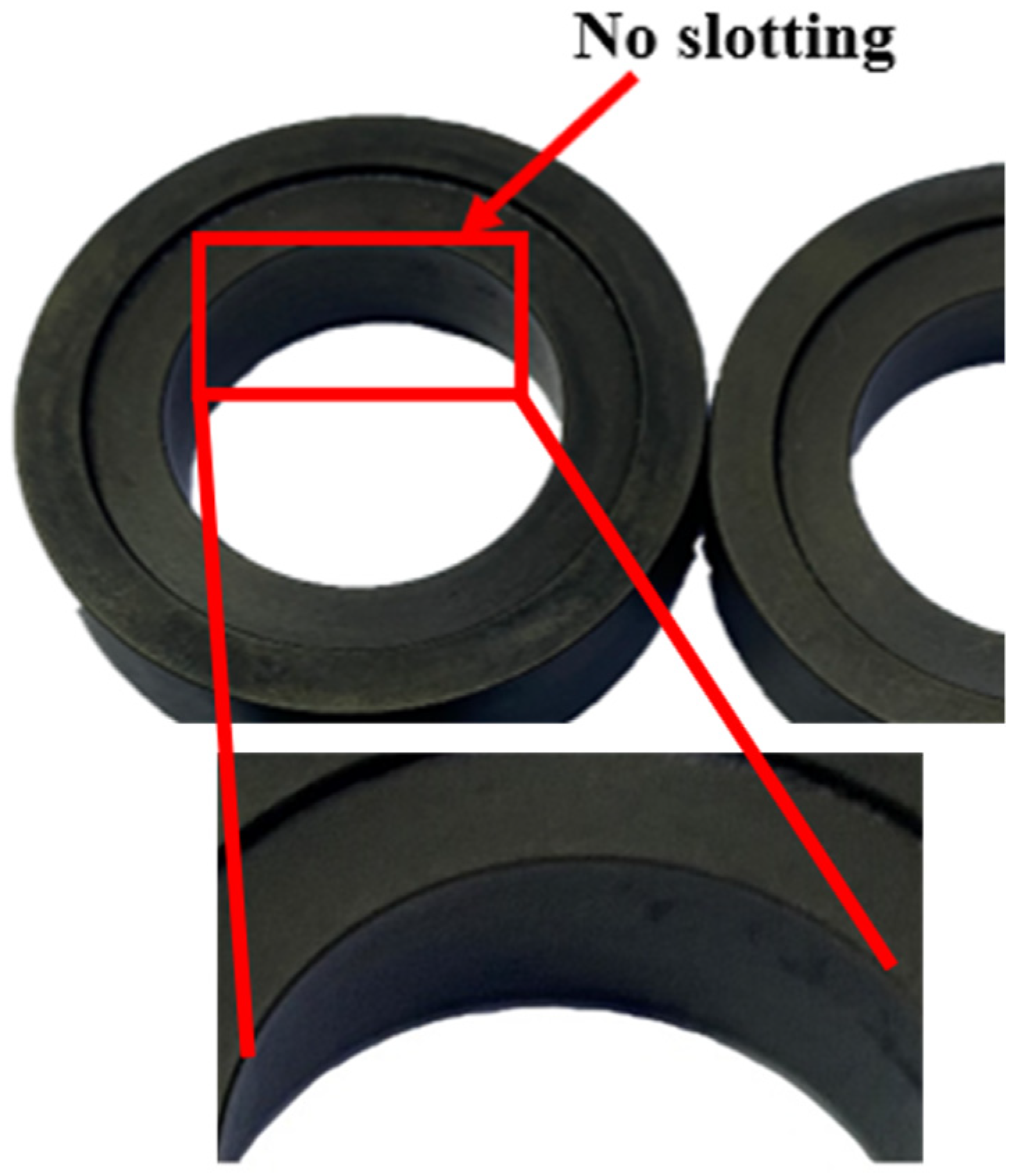


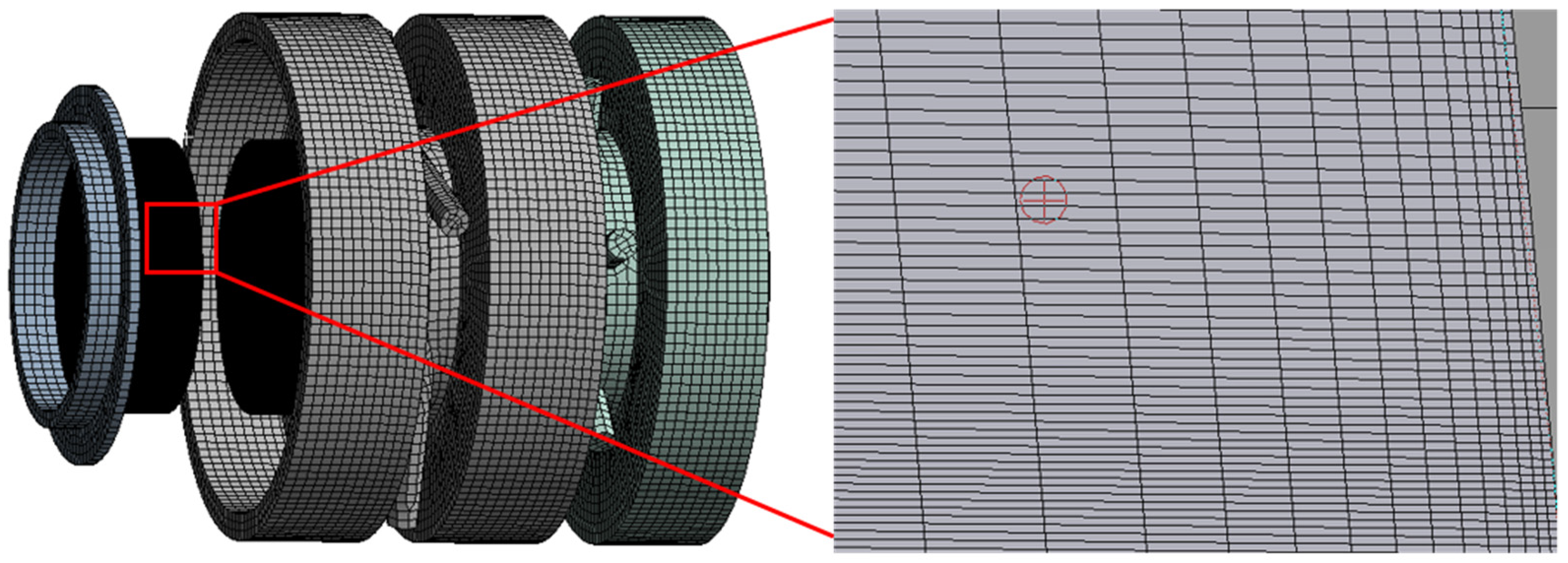
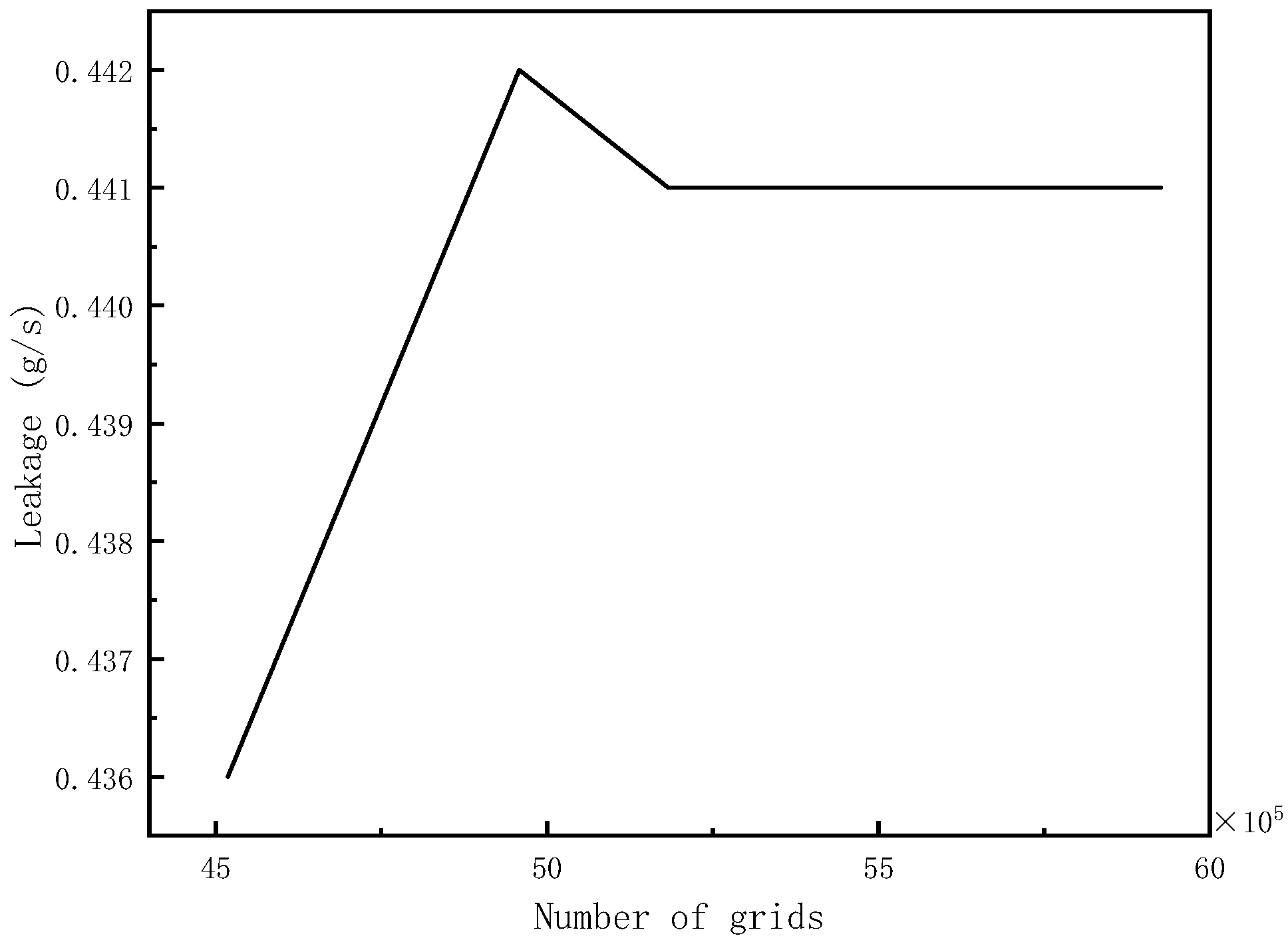
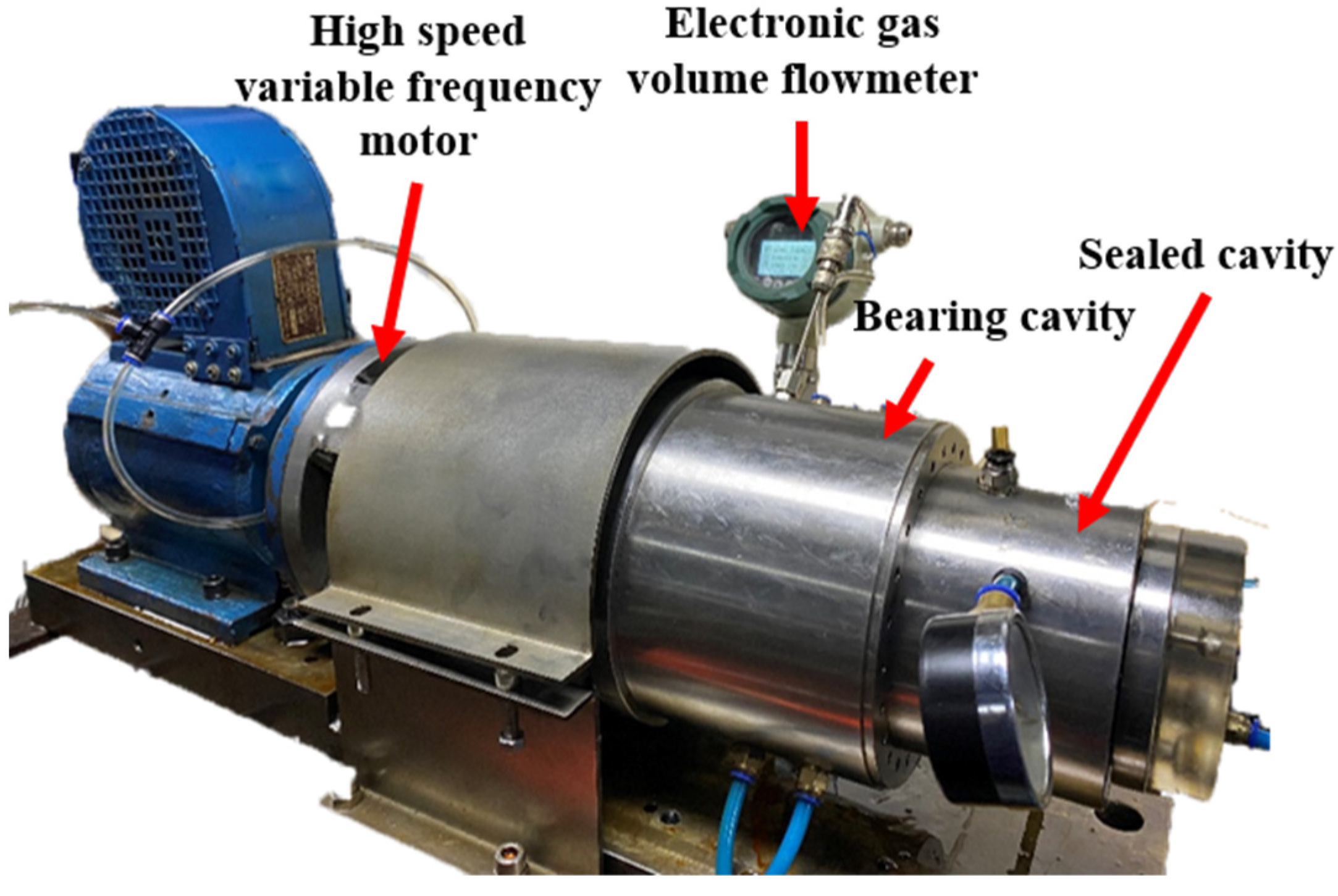
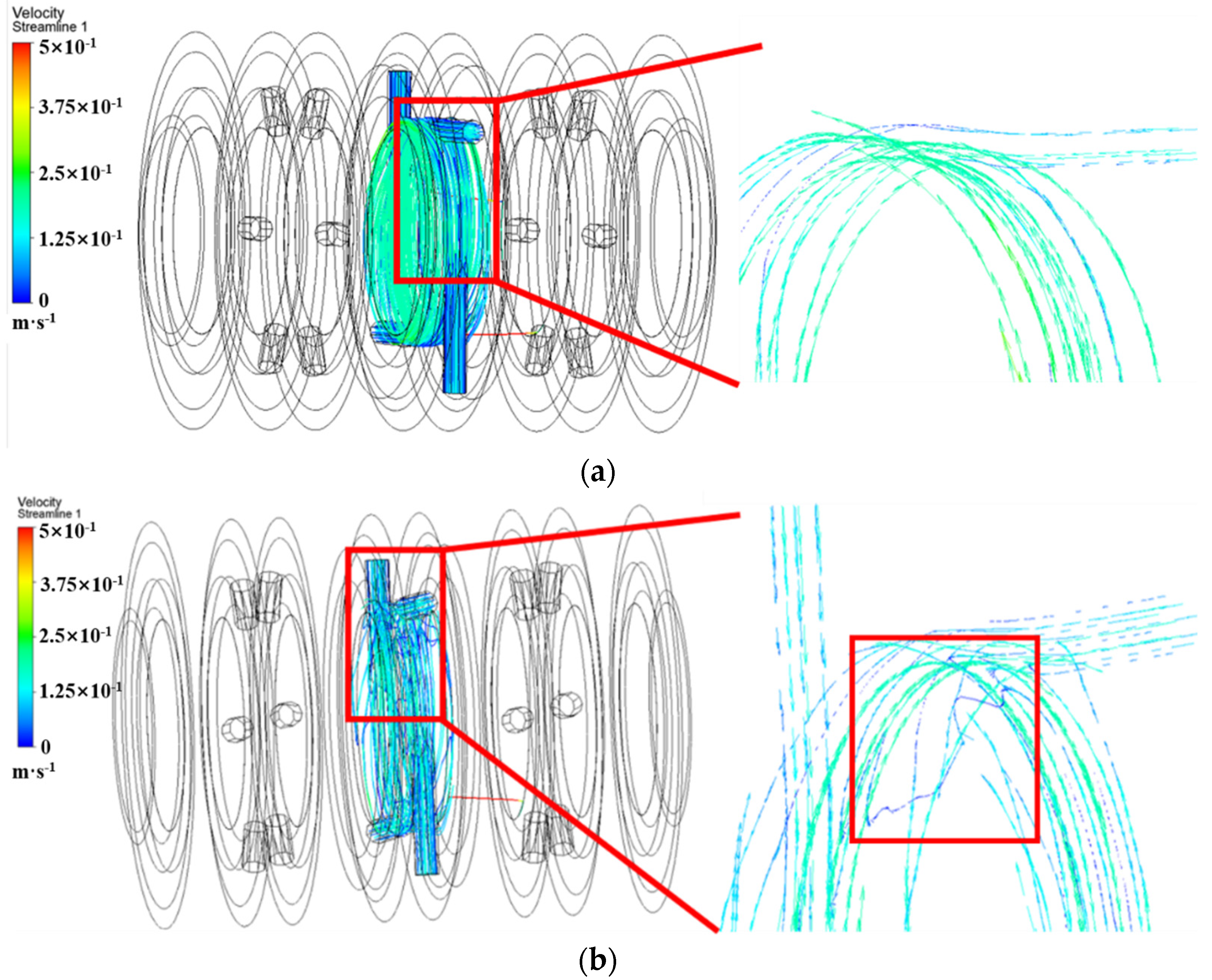
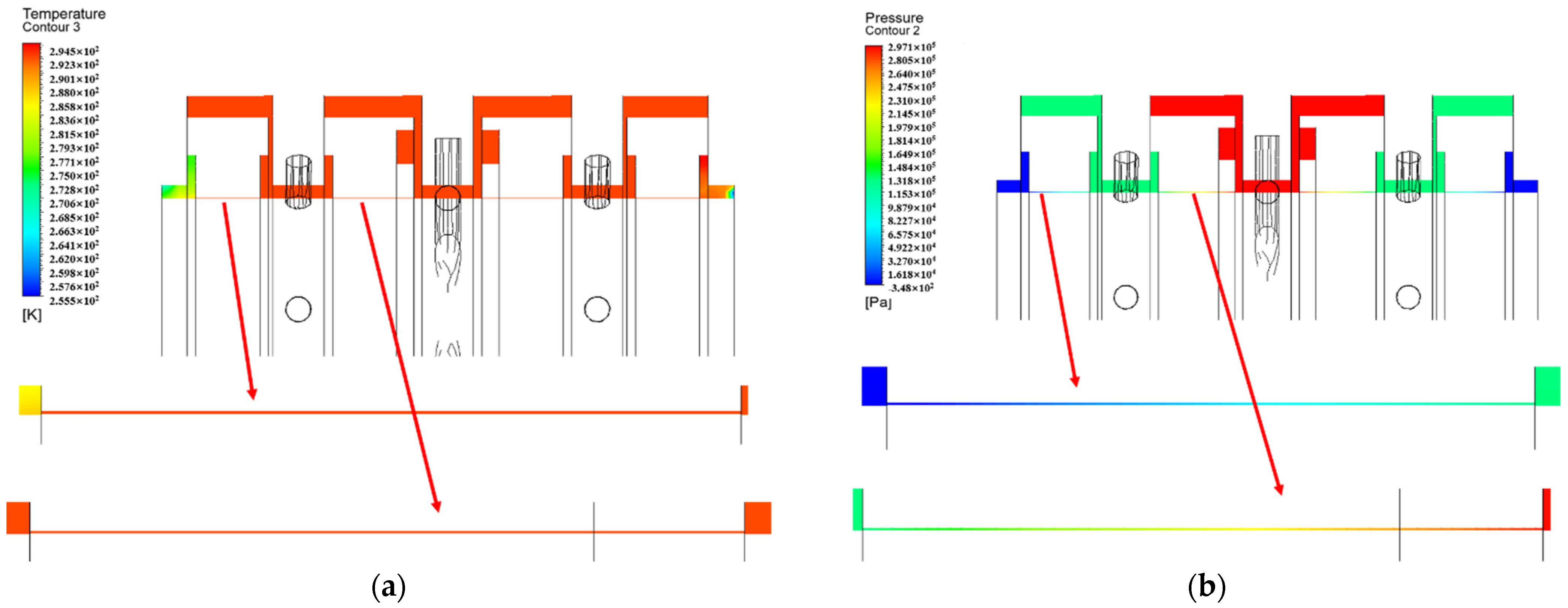
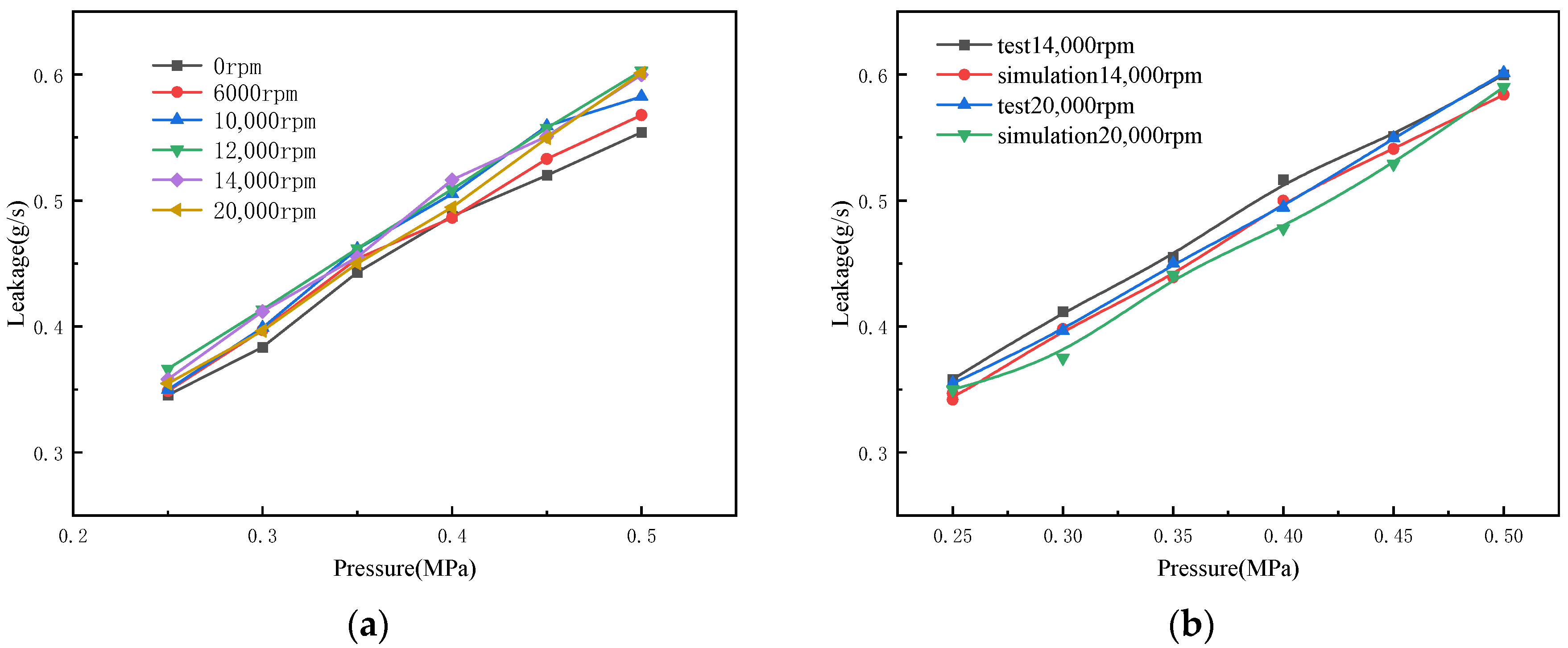
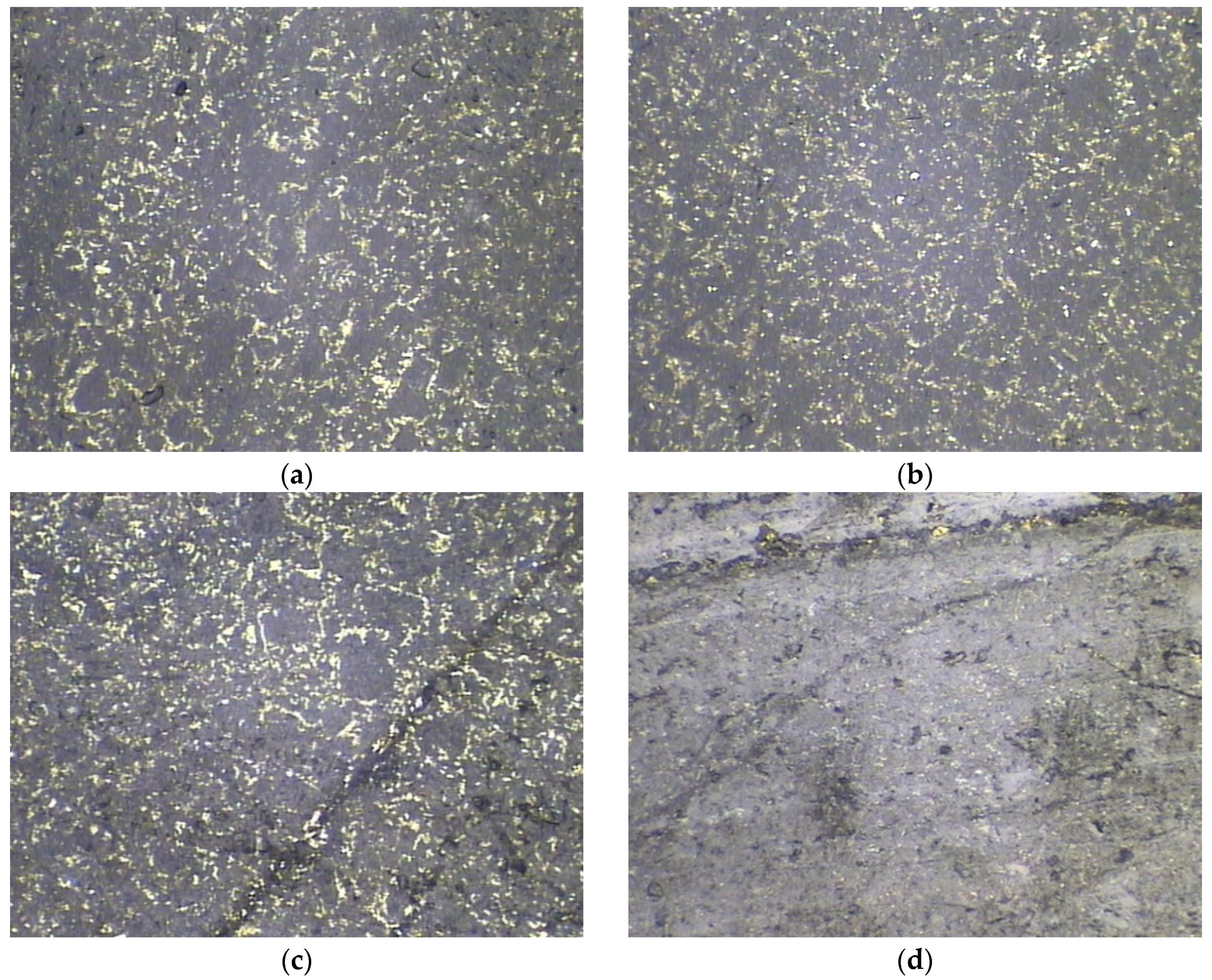
| Media | Temperature/K | Pressure/MPa | Rotational Speed/rpm | |
|---|---|---|---|---|
| Liquid oxygen side | Liquid oxygen | 90 | 0 | 15,000–35,000 |
| Liquid methane side | Liquid methane | 113 | 0 | |
| Isolated gas | Helium | 298 | 0.5 |
| Number | Name | Material |
|---|---|---|
| 1 | Sealing chamber | S30408 |
| 2 | Graphite ring | M120P |
| 3 | Gasket | PTFE |
| 4 | Wave spring | S304 |
| Nozzle Designator | Nozzle Name | Nozzle |
|---|---|---|
| A1–4 | Isolated gas inlet | Changes the isolation gas inlet pressure |
| B1–6/C1–6 | Primary outlet | Leakage channel after primary floating ring |
| D1–4/E1–4 | Secondary outlet | Leakage channel after secondary floating ring |
| Name | Boundary Condition | Numerical Value |
|---|---|---|
| Inlet A1–4 | Pressure-inlet | 0.25–0.5 MPa 298 K |
| Outlet (liquid oxygen side) | Pressure-outlet | 0 MPa 90 K |
| Outlet (liquid methane side) | Pressure-outlet | 0 MPa 113 K |
| Runway | Moving wall | 6000–20,000 rpm |
Disclaimer/Publisher’s Note: The statements, opinions and data contained in all publications are solely those of the individual author(s) and contributor(s) and not of MDPI and/or the editor(s). MDPI and/or the editor(s) disclaim responsibility for any injury to people or property resulting from any ideas, methods, instructions or products referred to in the content. |
© 2023 by the authors. Licensee MDPI, Basel, Switzerland. This article is an open access article distributed under the terms and conditions of the Creative Commons Attribution (CC BY) license (https://creativecommons.org/licenses/by/4.0/).
Share and Cite
Song, Z.; Li, S.; Chen, X.; Liu, Z.; Zhao, T.; Huang, B. Study on the Service Performance of a Two-Stage Floating-Ring Isolation Seal for a High-Speed Turbopump with a Cryogenic Medium. Machines 2023, 11, 373. https://doi.org/10.3390/machines11030373
Song Z, Li S, Chen X, Liu Z, Zhao T, Huang B. Study on the Service Performance of a Two-Stage Floating-Ring Isolation Seal for a High-Speed Turbopump with a Cryogenic Medium. Machines. 2023; 11(3):373. https://doi.org/10.3390/machines11030373
Chicago/Turabian StyleSong, Zifeng, Shuangxi Li, Xiaozhu Chen, Zhiyuan Liu, Tan Zhao, and Baiqi Huang. 2023. "Study on the Service Performance of a Two-Stage Floating-Ring Isolation Seal for a High-Speed Turbopump with a Cryogenic Medium" Machines 11, no. 3: 373. https://doi.org/10.3390/machines11030373




